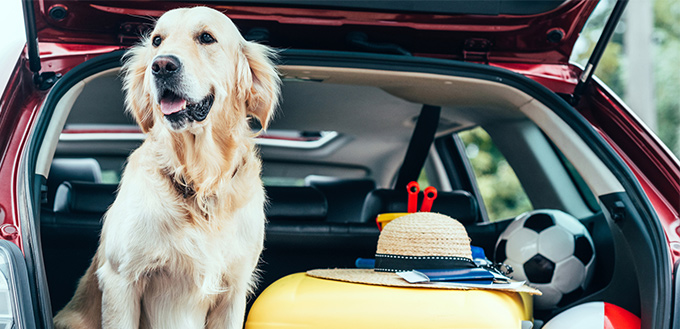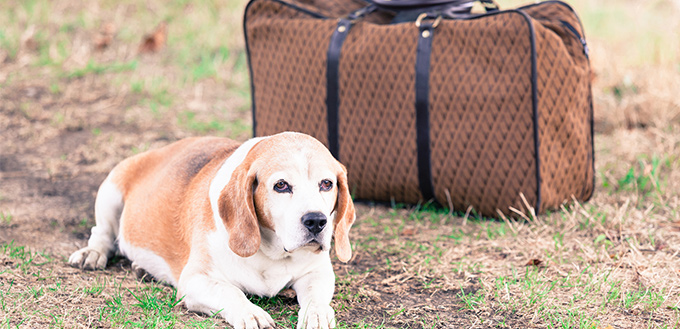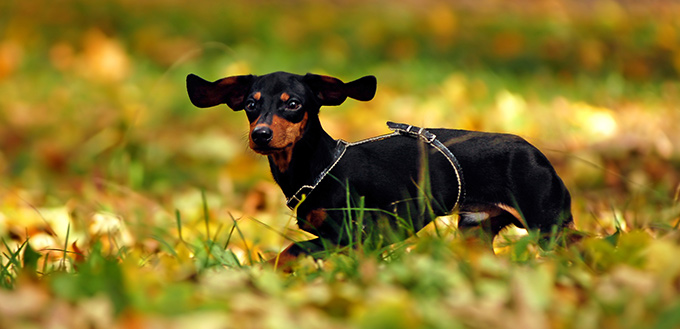Moving or relocating can be very stressful. While the idea of having new and perhaps better opportunities in life can provide the necessary motivation for families to push through with the move, the same cannot be said about the furry members of the family. For our pet dogs, relocating or moving to a new, unfamiliar place means having to give up things that they are already comfortable with. This can bring anxiety and stress. If some individuals find moving stressful, what more for dogs? The good news is that there are things you can do as its pet parent to help ease your dog’s discomfort and alleviate its anxiety related to moving. Here are 10 tips to help you relocate with your dog.
1. Get Everything Planned and Organized
Dogs have this uncanny ability to notice changes in and around the house. Somehow, they know something is up if they suddenly find boxes that are being filled with stuff from the home. There is nothing that worries a dog more than seeing its ‘world’ being ‘changed’ drastically. As such, it is important to make appropriate plans for the move and to have everything organized discreetly and over the course of time, instead of doing all the packing in a single day.
The important thing to remember here is to plan the move so that your dog’s normal every day routine doesn’t get disrupted needlessly. If your dog has been accustomed to being walked every afternoon or every day, then the days leading to the move should still have everyday dog walks.
It is also best to keep tabs on a variety of information that your dog will need during the move. If you’re considering getting a kennel for it to stay during the move, now’s the time to make appropriate arrangements. Having separate boxes intended primarily for their stuff may also be necessary.

2. Get Your Dog’s Veterinary Records Ready
One of the most important things you need to prepare for the move is your pet’s veterinary records. This can include your dog’s vaccination history as well as its complete medical history. Medications, treatments, and procedures that your dog has received or underwent with the current vet have to be fully recorded as they can prove vital when you’re presented with a veterinary problem at your new residence. The dog’s history of medication use is very important since some veterinary problems are attributable to the effects of certain drugs on the various body organ systems of dogs.
Veterinarians often base some of their clinical judgment on a host of historical information about the dog. Having as much information about your dog’s health as possible can help provide for better continuity of care.
Depending on where you will be relocating, your dog may require health certificates and additional vaccinations as part of the rules or laws observed by certain jurisdictions related to the movement of animals across their borders. It is often wise to learn beforehand what other requirements are expected of your dog so you can easily accomplish them before you actually move.
3. Update Your Dog’s Information
Days, preferably a few weeks, before your planned move you should already have a new pet ID tag for your dog. It should include your new address and the contact number. In case you don’t have any telephone numbers for the new location yet, you can put your mobile number or perhaps the number of someone you know and knows your dog, too. If your pet has a microchip embedded under its skin, the information that is contained in this microchip may also have to be updated.
Some pet parents actually recommend having two pet ID tags on your dog’s collar. One is for the current address while the other is your new location. If the existing pet ID tag is removed and you haven’t made your move yet, there’s a chance that whoever finds your dog will find it quite difficult to return the dog to you. You can remove the old ID tag on the moving day itself.
Related Post: Best Dog Collars
4. Make Sure You’re Ready With Your Dog’s Food and Medications
If you’re relocating to a place that is quite far from your current one, make sure to be ready with your pet’s food, medications, water, and even toys. A number of pet parents recommend preparing an emergency travel kit for dogs. This is a bag filled with all the dog’s essentials that should last a day or two. This can be filled with dog food, water, emergency medications, dog comfort accessories, and even dog toys to keep your pet entertained and fully engaged while on the move.
Sometimes it is often necessary to pack a week’s worth of dog food especially if the kind of food that your dog is accustomed to eating cannot be readily sourced in your new location. In such cases, you may be inclined to shift your dog’s diet to one that is readily available in the area. Having a week or two’s worth of dog food should help you in the transition. The same is true with prescription medications. Veterinarians don’t usually write prescriptions unless there is a prior vet-client relationship. If your dog urgently needs its medication, it may be difficult to source its treatment.

5. Protect Your Dog From Moving Day Chaos
Like what we said above, dogs can somehow sense that their world is being turned upside down. On the day of the move, it is best to bring your pet to the house of a friend where it can calmly stay while you’re packing and moving things out. Alternatively, you can bring your pet to a dog kennel for boarding. At least, it will not be significantly stressed because of all the things that are going on in your house. People will be packing and carrying boxes and other things from the house to the moving truck. There will be plenty of action that will only confuse your dog.
Now, if boarding or bringing your pet to your friend is not an option, you can leave your dog in one of the rooms of your house. Leave its favorite dog toy or let one of your older kids to stay and play with your pet. This is to make the move less stressful for your pet as well as for you.
Related Post: Dog Backpack Carrier
6. Travel Safely With Your Pet
On the day of the move, it is best to let your pet ride with you to your new home. If you’ve been taking your pet dog for a ride for quite some time already, then there really shouldn’t be any problems. However, if this is your pet’s first time to travel with you in your car, then it is best to train it first by driving shorter distances gradually moving farther away each time. Traveling with your pet during the move can help your dog feel more secure, minimizing any anxiety that it may have.
You may want to purchase a sturdy yet comfy travel crate for your pet to rest in while on the road. This is especially important when traveling by air. You’d also have to take note of the maximum pet carrier dimensions allowed by airline companies. When traveling on land, make sure to plan for frequent stops to allow your pet to stretch, pee, and even defecate. It’s also a great way to bond while you’re on your way to your new home.
You May Also Like: Airline Approved Pet Carriers
7. Devote a Special Time for Bonding and Exercise Upon Arrival
Once you arrive at your new home, make sure to spend some quality time with your pet dog. The past few days may have been especially stressful for your pet since you’ve been busy prepping for the move. However, it is often necessary to keep your pet inside your new house and to never allow them to venture outside. Not yet, anyway. Let them stay inside the pet crate. Remember that you will still be unpacking things and arranging them to fit your new home. This can be quite stressful for your dog that might think a big move is going to start again real soon.
If your dog has been properly crate-trained, it wouldn’t look at the crate as punishment. Instead, it will look at it as a very safe and comfortable place to be in, someplace your dog will feel very secure amidst the chaos that is occurring around it. Once you’re done unpacking and organizing things, make sure to spend some time bonding with your pet. This is a new place that your dog needs to also associate with pleasant things. You can start by giving it attention the way that you’ve always given.
Related Post: Best Dog Crates

8. Acclimatize Your Pet to Your New Home Before Letting Them Roam Around the ‘hood
Moving to a new home is like bringing a new pet dog to your house. You’ve got to housetrain it again. Your new home has quite a different setup to the old one. As such your dog may need some training to acclimatize it to your new house. This includes where it can stay to rest, where it needs to eat and drink, and where it needs to defecate in case your new house has a backyard.
As much as possible, don’t let your dog leave your house in the first several days after your arrival. This is to make sure that your pet has adjusted well to the change in scenery and to keep it from getting lost in the neighborhood. Allow you pet to roam around the house and inspect everything that it wants to check out. Bring out its toys and other accessories to aid in the acclimatization process. This should help your pet feel a lot more confident and comfortable with the new location.
9. Find a Veterinary Clinic in Your New Place of Residence
Spend the first week after arriving in your new neighborhood to look for a veterinary clinic that can provide the same quality of care as your previous vet, perhaps even better. If you did your homework before moving, your previous veterinarian may actually know someone in your new location who can continue with your pet’s veterinary care. If this is not possible, you can ask your new neighbors for recommendations especially those who also have dogs. Alternatively, you can search online for veterinary clinics within your area. Read the reviews or join online community forums to have an idea of the quality of veterinary services provided by the clinic.
Getting a new veterinarian to take care of your pet’s healthcare needs should not really be a problem if you’re moving to another city or its suburbs. But if you’re relocating to a rural area, the nearest vet clinic might still be miles away. Hopefully, you have taken this into consideration before you made the decision to move.
10. Resume Normal Canine Daily Activities as Soon as Possible
The faster you can resume with your dog’s normal everyday routine, the better it is for your pet. Dogs thrive on routine. Most dogs feel more secure with redundant activities since they can readily predict the outcomes of certain actions. If they cannot predict what will happen they might feel inadequate or unsure. They might begin to wonder if something is wrong with them. That is why you should resume your dog’s normal routine as soon as possible.
However, you should also consider its safety. Daily exercise is important. In the first few days after arrival, it is not generally advisable to let your dog out of the house for safety reasons. As such, you may want to think of other ways to meet your pet’s exercise needs. If your dog is more comfortable walking on a leash, then it shouldn’t be a problem going outside the home for its daily walk.
You May Also Like: Dog Leashes
Relocating can be a very stressful experience, especially for your dog. By considering these basic tips, not only are you making life a lot easier for your pet, you’re also addressing your own anxieties about the move.
Sources:
- Moving With Your Pet, ASPCA
- Moving with a Dog or Cat, Best Friends Animal Society
- Amy Goyer, Help Your Pet Adjust to a New Home, AARP






